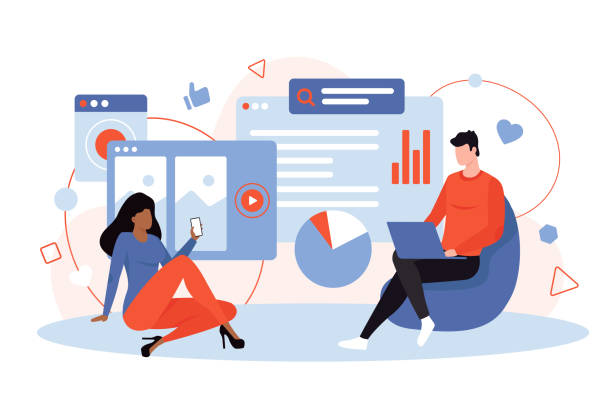مفهوم و اهمیت سئو داخلی چیست؟
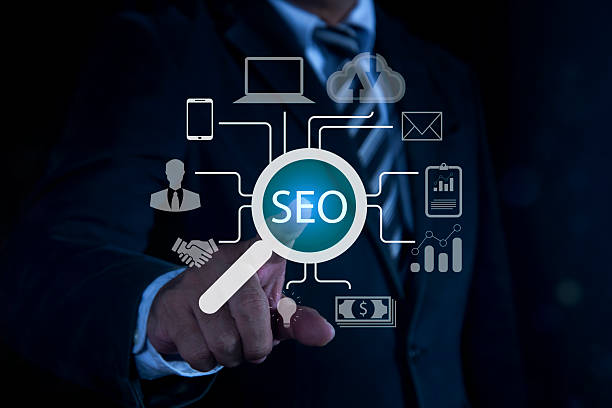
#سئو داخلی، یا بهینهسازی درون صفحهای، به مجموعه اقداماتی اطلاق میشود که درون خود وبسایت و در کنترل کامل مدیر سایت انجام میگیرد تا رتبه سایت در نتایج موتورهای جستجو بهبود یابد.
این اقدامات شامل بهینهسازی محتوا، کلمات کلیدی، ساختار URL، متا تگها، تصاویر و لینکهای داخلی است.
هدف اصلی سئو داخلی، ارسال سیگنالهای واضح و قابل فهم به موتورهای جستجو درباره موضوعیت و کیفیت محتوای یک صفحه است.
این فرایند شامل تحلیل دقیق کلمات کلیدی مورد نظر کاربران، ساختار دهی منطقی به محتوا، و اطمینان از دسترسی آسان خزندههای موتور جستجو به تمامی بخشهای سایت است.
یک وبسایت با سئو داخلی قوی نه تنها به موتورهای جستجو کمک میکند تا محتوای شما را بهتر درک و رتبهبندی کنند، بلکه تجربه کاربری (User Experience) را نیز بهبود میبخشد، که خود یک فاکتور مهم در رتبهبندی است.
به عنوان مثال، سرعت بارگذاری صفحه، قابلیت موبایل فرندلی بودن و طراحی ریسپانسیو همگی از جنبههای کلیدی سئو داخلی هستند.
این بخش یک توضیحی کامل از مبانی و چرایی اهمیت این نوع سئو ارائه میدهد و پایه و اساس بهینهسازی برای موتورهای جستجو است.
بدون سئو داخلی صحیح، حتی بهترین محتوا نیز ممکن است هرگز دیده نشود.
از دست دادن مشتریان به دلیل طراحی ضعیف سایت فروشگاهی خسته شدهاید؟ با رساوب، این مشکل را برای همیشه حل کنید!
✅ افزایش فروش و نرخ تبدیل بازدیدکننده به مشتری
✅ تجربه کاربری روان و جذاب برای مشتریان شما⚡ دریافت مشاوره رایگان
نقش کلمات کلیدی در استراتژی سئو داخلی
![]()
کلمات کلیدی ستون فقرات هر استراتژی سئو داخلی هستند و درک عمیق از نحوه تحقیق و استفاده از آنها برای بهینهسازی بسیار حیاتی است.
انتخاب کلمات کلیدی مناسب به معنای یافتن عباراتی است که مخاطبان هدف شما برای جستجوی اطلاعات، محصولات یا خدمات شما از آنها استفاده میکنند.
این بخش یک اموزشی جامع در مورد نحوه انجام تحقیقات کلمات کلیدی، شناسایی کلمات کلیدی دمبلند (long-tail keywords) و استفاده استراتژیک از آنها در سراسر محتوای وبسایت شما ارائه میدهد.
این شامل قرار دادن کلمات کلیدی در عنوان صفحه، توضیحات متا، هدینگها (H1, H2, H3)، متن اصلی، و حتی نام فایل تصاویر است.
تراکم کلمات کلیدی باید طبیعی باشد و از پر کردن بیرویه کلمات کلیدی (keyword stuffing) که میتواند به رتبه سایت آسیب برساند، خودداری شود.
ابزارهای تحقیق کلمات کلیدی مانند Google Keyword Planner, Ahrefs, SEMrush میتوانند به شما در شناسایی فرصتهای جدید و تحلیل رقابت کمک کنند.
علاوه بر این، باید به نیت جستجوی کاربر (search intent) توجه ویژه داشت؛ آیا کاربر به دنبال اطلاعات است، قصد خرید دارد، یا به دنبال مسیری خاص میگردد؟ درک این نیت به شما کمک میکند تا محتوایی تولید کنید که دقیقا نیاز کاربر را برطرف کند و در نتیجه بهینهسازی داخلی سایت شما را بهبود بخشد.
موفقیت در سئو داخلی به شدت به توانایی شما در انتخاب و به کارگیری هوشمندانه کلمات کلیدی وابسته است.
بهینهسازی محتوا برای سئو داخلی
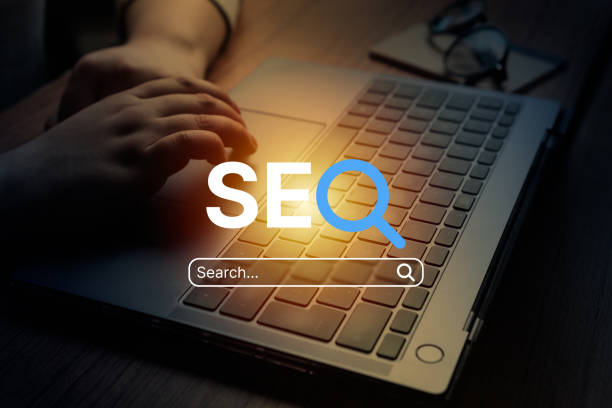
محتوا پادشاه است و بهینهسازی آن برای سئو داخلی نیازمند رویکردی تخصصی و جامع است.
این فصل به جزئیات بهینهسازی محتوای متنی، از جمله ساختار پاراگرافها، استفاده از هدینگهای مناسب (H1 تا H6)، و اهمیت محتوای ارزشمند و منحصر به فرد میپردازد.
محتوای با کیفیت نه تنها کاربران را جذب میکند بلکه موتورهای جستجو را نیز وادار به رتبهبندی بالاتر میکند.
هر صفحه باید دارای یک H1 منحصر به فرد باشد که شامل کلمه کلیدی اصلی آن صفحه است.
همچنین، استفاده از هدینگهای فرعی (H2, H3 و غیره) برای تقسیم بندی محتوا به بخشهای کوچکتر و قابل هضمتر بسیار مهم است.
این کار هم خوانایی را برای کاربران افزایش میدهد و هم به موتورهای جستجو کمک میکند تا ساختار و موضوعات فرعی محتوا را بهتر درک کنند.
طول محتوا نیز میتواند تأثیرگذار باشد؛ محتوای جامع و عمیق که به تمامی جنبههای یک موضوع میپردازد، اغلب عملکرد بهتری در نتایج جستجو دارد.
افزودن لیستها، جداول و نقل قولها به جذابیت بصری و قابلیت خواندن محتوا کمک میکند.
محتوای شما باید به سوالات کاربران پاسخ دهد و ارزش واقعی ارائه دهد، نه اینکه صرفاً مجموعهای از کلمات کلیدی باشد.
این امر به طور مستقیم بر تجربه کاربری و در نهایت بر رتبه سئو داخلی شما تأثیر میگذارد.
بهینهسازی محتوا فراتر از کلمات کلیدی است؛ این شامل ایجاد یک تجربه غنی و آموزنده برای بازدیدکنندگان است که آنها را تشویق به ماندن بیشتر در سایت و تعامل با محتوا میکند.
جدول زیر، چک لیستی از مهمترین عناصر بهینهسازی محتوا را برای سئو داخلی نشان میدهد:
| عنصر | توضیح | اهمیت در سئو داخلی |
|---|---|---|
| عنوان صفحه (Title Tag) | اصلیترین عنوان یک صفحه که در نتایج جستجو نمایش داده میشود. | بسیار بالا: اولین چیزی که کاربران و موتورهای جستجو میبینند. باید شامل کلمه کلیدی اصلی باشد. |
| توضیحات متا (Meta Description) | خلاصهای کوتاه از محتوای صفحه که زیر عنوان در نتایج جستجو میآید. | متوسط: بر نرخ کلیک (CTR) تأثیر میگذارد، نه مستقیماً بر رتبه. |
| هدینگها (H1, H2, …) | سرفصلهای ساختاری محتوا که به دستهبندی موضوعات کمک میکنند. | بالا: بهبود خوانایی و کمک به موتورهای جستجو برای درک ساختار محتوا. |
| محتوای متنی | بدنه اصلی متن صفحه که اطلاعات و ارزش ارائه میدهد. | بسیار بالا: باید جامع، منحصر به فرد و حاوی کلمات کلیدی مرتبط باشد. |
| خوانایی و تجربه کاربری | سهولت در خواندن و درک محتوا و تعامل با آن. | بالا: نرخ پرش کمتر و زمان ماندگاری بیشتر. |
ساختار URL و پیوندهای داخلی
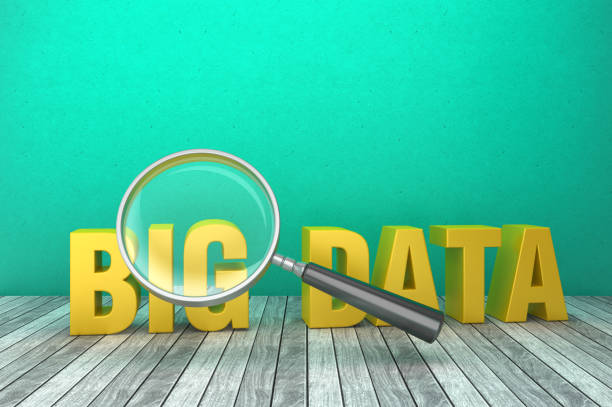
ساختار URL (Uniform Resource Locator) و سیستم پیوندهای داخلی دو عامل حیاتی در سئو داخلی هستند که اغلب نادیده گرفته میشوند.
یک راهنمایی صحیح برای URLها این است که آنها باید کوتاه، توصیفی و شامل کلمات کلیدی اصلی صفحه باشند.
URLهای تمیز و معنادار نه تنها به کاربران کمک میکنند تا محتوای صفحه را قبل از کلیک درک کنند، بلکه برای موتورهای جستجو نیز خواناتر هستند.
از استفاده از پارامترهای پیچیده و نامفهوم در URL خودداری کنید.
به عنوان مثال، به جای yoursite.com/productid=123&category=electronics، بهتر است از yoursite.com/electronics/smart-tv استفاده کنید.
از سوی دیگر، پیوندهای داخلی نقش اساسی در توزیع اعتبار صفحه (PageRank) در سراسر وبسایت شما و کمک به موتورهای جستجو برای کشف صفحات جدید ایفا میکنند.
یک ساختار لینک داخلی قوی باعث میشود که خزندههای موتور جستجو (crawlers) بتوانند به راحتی از یک صفحه به صفحه دیگر حرکت کرده و تمام محتوای ارزشمند شما را ایندکس کنند.
همچنین، این لینکها به کاربران کمک میکنند تا به راحتی در سایت شما ناوبری کنند و تجربه کاربری بهتری داشته باشند.
استفاده از انکر تکست (anchor text) مرتبط و غنی از کلمات کلیدی برای لینکهای داخلی بسیار مهم است.
برای مثال، اگر در مورد “راهنمای کامل سئو داخلی” مینویسید، میتوانید به صفحهای دیگر که “ابزارهای سئو داخلی” را معرفی میکند، لینک دهید.
این ارتباط معنایی بین صفحات به بهینهسازی درون صفحهای شما اعتبار میبخشد و قدرت صفحات را به درستی توزیع میکند.
آیا از دست دادن فرصتهای کسبوکار به دلیل نداشتن سایت شرکتی حرفهای خسته شدهاید؟
رساوب با طراحی سایت شرکتی حرفهای، به شما کمک میکند:
✅ تصویری قدرتمند و قابل اعتماد از برند خود بسازید
✅ بازدیدکنندگان سایت را به مشتریان وفادار تبدیل کنید
⚡ همین حالا مشاوره رایگان دریافت کنید!
سرعت بارگذاری و تجربه کاربری
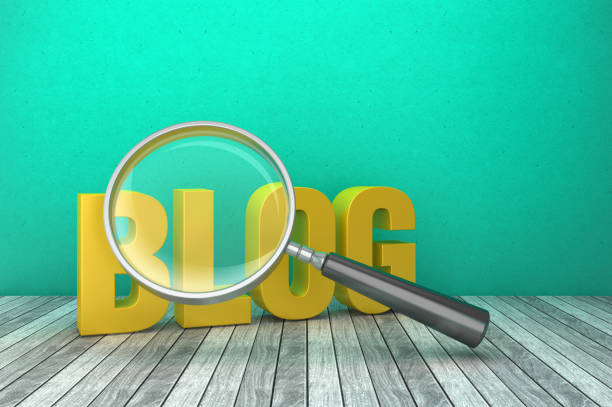
سرعت بارگذاری صفحه و تجربه کاربری (UX) دو فاکتور حیاتی هستند که گوگل و سایر موتورهای جستجو به آنها اهمیت بالایی میدهند و به طور مستقیم بر سئو داخلی تأثیر میگذارند.
یک سایت کند نه تنها کاربران را ناامید میکند و باعث افزایش نرخ پرش (bounce rate) میشود، بلکه به موتورهای جستجو نیز سیگنال میدهد که سایت شما تجربه کاربری مطلوبی ندارد.
این بخش یک تحلیل تحلیلی عمیق از اهمیت سرعت صفحه و چگونگی بهینهسازی آن ارائه میدهد، از جمله فشردهسازی تصاویر، بهینهسازی کد CSS و JavaScript، استفاده از کش مرورگر و CDN (شبکه توزیع محتوا).
همچنین، طراحی ریسپانسیو و موبایل فرندلی بودن سایت امروزه یک ضرورت برای سئو داخلی است، زیرا بخش عظیمی از جستجوها از طریق دستگاههای موبایل انجام میشود.
گوگل با معرفی Core Web Vitals، تاکید خود را بر جنبههای تجربه کاربری مانند Largest Contentful Paint (LCP), First Input Delay (FID), و Cumulative Layout Shift (CLS) افزایش داده است.
رعایت این معیارها برای بهینهسازی داخلی سایت شما حیاتی است. بهبود تجربه کاربری شامل طراحی ناوبری شهودی، ارائه محتوای با کیفیت و قابل دسترس، و اطمینان از اینکه کاربران به راحتی میتوانند اطلاعات مورد نیاز خود را پیدا کنند، میشود.
سئو داخلی موفق تنها در مورد خزندههای موتور جستجو نیست؛ بلکه در مورد ایجاد بهترین تجربه ممکن برای کاربران نیز هست.
اهمیت متا تگها در سئو داخلی
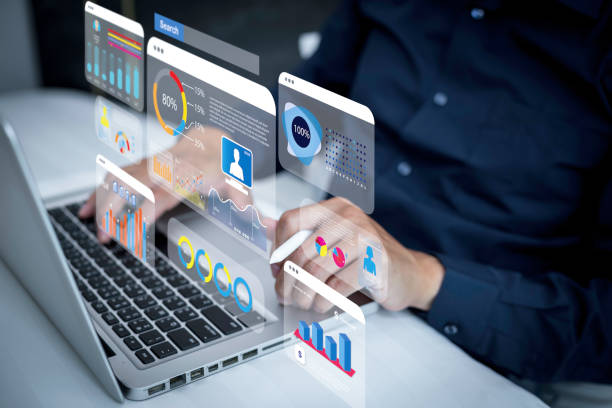
متا تگها، به ویژه متا عنوان (Meta Title) و متا توضیحات (Meta Description)، اجزای بسیار مهمی از سئو داخلی هستند که اطلاعات حیاتی را به موتورهای جستجو و کاربران ارائه میدهند.
اگرچه متا توضیحات به طور مستقیم بر رتبهبندی تأثیر نمیگذارد، اما میتواند نرخ کلیک (CTR) شما را در نتایج جستجو به شدت افزایش دهد.
این فصل یک توضیحی دقیق از نحوه نوشتن متا تگهای جذاب و بهینهسازی شده برای هر صفحه از وبسایت شما ارائه میدهد.
متا عنوان باید شامل کلمه کلیدی اصلی صفحه باشد و حدوداً 50-60 کاراکتر باشد تا به طور کامل در نتایج جستجو نمایش داده شود.
این عنوان باید مختصر، توصیفی و گیرا باشد.
متا توضیحات نیز باید یک خلاصه جذاب از محتوای صفحه باشد که کاربران را ترغیب به کلیک کند و شامل کلمات کلیدی مرتبط باشد، در حدود 150-160 کاراکتر.
فراتر از این دو، تگهای دیگری مانند Meta Robots (برای کنترل نحوه ایندکس شدن صفحات) و Canonical Tags (برای جلوگیری از مشکلات محتوای تکراری) نیز در سئو داخلی نقش کلیدی دارند.
استفاده صحیح از این متا تگها به موتورهای جستجو کمک میکند تا محتوای شما را بهتر درک کنند و در نتیجه، صفحات شما در نتایج جستجو برجستهتر دیده شوند.
هر صفحه از وبسایت شما باید متا تگهای منحصر به فرد و بهینهسازی شده خود را داشته باشد.
نادیده گرفتن این عناصر میتواند منجر به از دست دادن فرصتهای مهم برای جذب ترافیک ارگانیک شود، بنابراین دقت در نوشتن آنها جزء جداییناپذیر یک استراتژی موفق بهینهسازی داخلی است.
تصاویر و ویدئوها در سئو داخلی

بهینهسازی رسانهها، به خصوص تصاویر و ویدئوها، بخش مهمی از سئو داخلی است که میتواند به طور قابل توجهی به دیدهشدن سایت شما در نتایج جستجو کمک کند.
این فصل یک راهنمایی عملی برای بهینهسازی تصاویر شامل استفاده از نام فایلهای توصیفی، متن جایگزین (alt text) مناسب و فشردهسازی تصاویر برای بهبود سرعت بارگذاری صفحه ارائه میدهد.
متن جایگزین برای تصاویر نه تنها به افراد دارای معلولیت بینایی کمک میکند، بلکه به موتورهای جستجو نیز اجازه میدهد تا محتوای تصویر را درک کنند. این متن باید شامل کلمات کلیدی مرتبط باشد اما نباید بیش از حد پر از کلمات کلیدی شود.
علاوه بر این، ابعاد تصاویر باید مناسب باشند تا سرعت بارگذاری را کند نکنند.
برای ویدئوها نیز، بهینهسازی شامل استفاده از اسکیما مارکآپ (Schema Markup) برای ویدئوها، ایجاد فایلهای نقشه سایت ویدئو (video sitemaps) و ارائه رونوشت (transcripts) یا زیرنویس است.
این اقدامات به موتورهای جستجو کمک میکند تا محتوای ویدئویی شما را بهتر ایندکس و در نتایج جستجو (از جمله نتایج جستجوی ویدئو) نمایش دهند.
بهینهسازی رسانهها نه تنها برای سئو داخلی مفید است، بلکه تجربه کاربری را نیز بهبود میبخشد، زیرا کاربران به محتوای بصری و ویدئویی علاقه بیشتری دارند.
در زیر جدولی از نکات کلیدی برای بهینهسازی تصاویر و ویدئوها برای سئو داخلی آورده شده است:
| عنصر رسانهای | اقدام بهینهسازی | مزیت برای سئو داخلی |
|---|---|---|
| تصاویر | – فشردهسازی اندازه فایل – استفاده از Alt Text توصیفی و کلمهکلیدیدار – نامگذاری فایل به صورت توصیفی – استفاده از ابعاد صحیح |
– افزایش سرعت بارگذاری – کمک به موتور جستجو برای درک محتوای تصویر – بهبود دیدهشدن در جستجوی تصاویر گوگل |
| ویدئوها | – استفاده از Schema Markup ویدئو – ایجاد نقشه سایت ویدئو – ارائه رونوشت یا زیرنویس – میزبانی ویدئو در پلتفرمهای مناسب (مانند YouTube) |
– بهبود ایندکسپذیری و قابل مشاهده بودن – افزایش شانس نمایش در نتایج جستجوی ویدئو – درک بهتر محتوای ویدئو توسط موتورها |
بررسی فنی سایت و رفع خطاها

یک جنبه تخصصی اما حیاتی از سئو داخلی، انجام بررسیهای فنی منظم برای شناسایی و رفع خطاهایی است که میتوانند بر قابلیت خزش (crawlability) و ایندکسپذیری (indexability) وبسایت شما تأثیر بگذارند.
این فصل یک تحلیلی دقیق از ابزارهای موجود مانند Google Search Console و Screaming Frog ارائه میدهد که میتوانند به شناسایی مشکلاتی مانند خطاهای 404 (صفحه یافت نشد)، خطاهای 500 (خطاهای سرور)، لینکهای شکسته، مشکلات فایل Robots.txt و مشکلات نقشه سایت XML کمک کنند.
فایل Robots.txt به موتورهای جستجو میگوید که کدام بخشهای سایت شما را میتوانند بخزند و کدامها را نه.
نقشه سایت XML نیز یک نقشه راه برای موتورهای جستجو است تا تمامی صفحات مهم وبسایت شما را کشف و ایندکس کنند.
اطمینان از سلامت فنی سایت به موتورهای جستجو سیگنال میدهد که سایت شما با کیفیت و قابل اعتماد است، که این امر به طور مستقیم بر رتبهبندی سئو داخلی شما تأثیر میگذارد.
مشکلات فنی حل نشده میتوانند مانند یک مانع عمل کنند و مانع از دستیابی سایت شما به پتانسیل کامل خود در نتایج جستجو شوند.
بنابراین، بررسیهای منظم فنی و اصلاح سریع هر گونه خطا جزء ضروری استراتژی بهینهسازی داخلی سایت است.
این کار مستلزم درک عمیق از نحوه کار موتورهای جستجو و پروتکلهای وب است.
آیا میدانید طراحی ضعیف فروشگاه آنلاین میتواند تا ۷۰٪ از مشتریان احتمالی شما را فراری دهد؟ رسـاوب با طراحی سایتهای فروشگاهی حرفهای و کاربرپسند، فروش شما را متحول میکند.
✅ افزایش چشمگیر فروش و درآمد
✅ بهینهسازی کامل برای موتورهای جستجو و موبایل
⚡ [دریافت مشاوره رایگان از رسـاوب]
محتوای سوالبرانگیز و تعاملی برای سئو داخلی
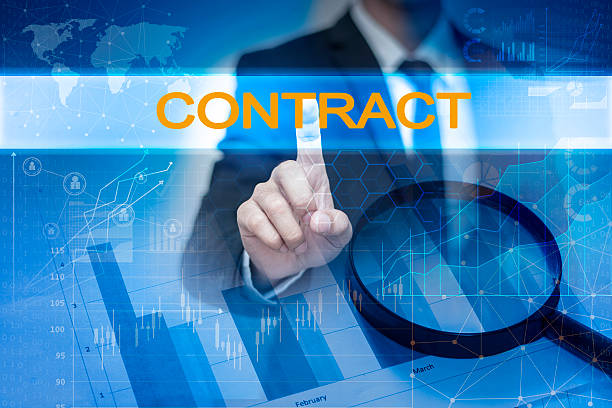
امروزه، صرفاً تولید محتوای اطلاعاتی کافی نیست؛ برای موفقیت در سئو داخلی، نیاز به ایجاد محتوای محتوای سوالبرانگیز و سرگرمکننده داریم که کاربران را به تعامل وادار کند.
این فصل به بررسی انواع محتوای تعاملی مانند نظرسنجیها، آزمونها، ماشینحسابها، بخشهای پرسش و پاسخ (FAQ)، و اینفوگرافیکهای تعاملی میپردازد که نه تنها زمان ماندگاری کاربر در سایت را افزایش میدهند، بلکه نرخ پرش را نیز کاهش میدهند.
افزایش تعامل کاربران سیگنال مثبتی به موتورهای جستجو میفرستد که محتوای شما ارزشمند و جذاب است، که این امر به نوبه خود میتواند رتبه سئو داخلی شما را بهبود بخشد.
محتوای سوالبرانگیز، مانند مقالاتی که به سوالات پرتکرار کاربران پاسخ میدهند یا مطالبی که به موضوعات بحثبرانگیز میپردازند، میتوانند ترافیک زیادی را جذب کرده و بحث و تبادل نظر را در سایت یا شبکههای اجتماعی برانگیزند.
این نوع محتوا میتواند به طور طبیعی لینکهای ورودی (backlinks) بیشتری جذب کند، که اگرچه به طور مستقیم جزو سئو داخلی نیستند، اما به طور غیر مستقیم بر اعتبار سایت و در نتیجه بر عملکرد کلی سئو تأثیر میگذارند.
همچنین، استفاده از دادههای ساختاریافته (Schema Markup) برای بخشهای پرسش و پاسخ (FAQ Schema) میتواند به نمایش پاسخهای شما به طور مستقیم در نتایج جستجو کمک کند و دیدهشدن سایت شما را به شدت افزایش دهد.
خلق محتوایی که کاربران را به فکر وادارد و آنها را به مشارکت تشویق کند، یک استراتژی قدرتمند برای بهینهسازی داخلی سایت است.
پایش و تحلیل عملکرد سئو داخلی

پس از پیادهسازی استراتژیهای سئو داخلی، پایش و تحلیل مستمر عملکرد برای اطمینان از اثربخشی آنها حیاتی است.
این فصل یک تحلیلی جامع از ابزارهایی مانند Google Analytics و Google Search Console ارائه میدهد که به شما کمک میکنند تا ترافیک ارگانیک، رتبهبندی کلمات کلیدی، نرخ کلیک، نرخ پرش و سایر معیارهای کلیدی را رصد کنید.
Google Search Console اطلاعات ارزشمندی در مورد نحوه مشاهده سایت شما توسط گوگل، از جمله خطاهای خزش، ایندکسپذیری و عملکرد جستجو ارائه میدهد. Google Analytics نیز به شما کمک میکند تا رفتار کاربران را در سایت خود درک کنید، از جمله اینکه کاربران چگونه به سایت شما میرسند، کدام صفحات را بازدید میکنند و چه مدت در سایت میمانند.
با بررسی دقیق این دادهها، میتوانید نقاط قوت و ضعف استراتژی سئو داخلی خود را شناسایی کرده و بر اساس آن تصمیمات آگاهانه برای بهینهسازی بیشتر بگیرید.
این فرایند پایش به شما این امکان را میدهد که به سرعت به تغییرات در الگوریتمهای موتورهای جستجو یا رفتار کاربران واکنش نشان دهید.
به عنوان مثال، اگر متوجه کاهش ناگهانی ترافیک ارگانیک برای یک صفحه خاص شدید، میتوانید محتوای آن را مجدداً بهینهسازی کنید یا مشکلات فنی آن را بررسی کنید.
بخش خبری این فصل به اهمیت بهروز ماندن با آخرین تغییرات الگوریتمهای گوگل و نحوه انطباق استراتژی سئو داخلی شما با این تغییرات اشاره دارد.
تحلیل دقیق دادهها به شما امکان میدهد تا به طور مداوم بهینهسازی داخلی سایت خود را بهبود بخشید و جایگاه رقابتی خود را حفظ کنید.
سوالات متداول
| سوال | پاسخ |
|---|---|
| عنوان متا (Meta Title) چیست و چرا در سئو داخلی اهمیت دارد؟ | عنوان متا مهمترین عنصر سئو داخلی است که در بالای تب مرورگر و نتایج جستجو نمایش داده میشود. این عنوان به موتورهای جستجو و کاربران کمک میکند تا موضوع اصلی صفحه را درک کنند و باید شامل کلمه کلیدی اصلی باشد. |
| توضیحات متا (Meta Description) چه نقشی در سئو داخلی ایفا میکند؟ | توضیحات متا خلاصهای کوتاه از محتوای صفحه است که در نتایج جستجو زیر عنوان نمایش داده میشود. اگرچه مستقیماً در رتبهبندی تاثیر ندارد، اما جذابیت آن میتواند نرخ کلیک (CTR) را افزایش دهد. |
| چگونه باید از کلمات کلیدی در محتوای صفحه استفاده کرد؟ | کلمات کلیدی باید به صورت طبیعی و مرتبط در مکانهای استراتژیک مانند عنوان، تیترها، پاراگراف اول، و بدنه متن به کار روند. از انباشت بیش از حد کلمات کلیدی (Keyword Stuffing) خودداری کنید. |
| اهمیت محتوای با کیفیت و جامع در سئو داخلی چیست؟ | محتوای با کیفیت، یونیک، آموزنده و جامع که به نیازهای کاربر پاسخ دهد، از اهمیت بالایی برخوردار است. موتورهای جستجو به محتوایی که ارزش واقعی ایجاد میکند، رتبه بالاتری میدهند. |
| کاربرد تگهای هدینگ (H1-H6) در ساختار سئو داخلی چیست؟ | تگهای هدینگ (H1، H2، H3 و غیره) برای ساختاردهی محتوا و مشخص کردن اهمیت بخشهای مختلف استفاده میشوند. H1 عنوان اصلی صفحه است و هر صفحه باید فقط یک H1 داشته باشد. سایر تگها برای زیرعنوانها به کار میروند. |
| چگونه تصاویر را برای بهبود سئو داخلی بهینه کنیم؟ | برای بهینهسازی تصاویر، از متن جایگزین (Alt Text) توصیفی که شامل کلمات کلیدی مرتبط باشد استفاده کنید، حجم فایل تصویر را بدون افت کیفیت کاهش دهید و از نامهای فایل معنیدار و مرتبط استفاده کنید. |
| URL دوستانه برای سئو داخلی چه ویژگیهایی دارد؟ | URL دوستانه باید کوتاه، خوانا، توصیفی، شامل کلمات کلیدی اصلی و بدون کاراکترهای اضافی باشد. ساختار URL باید سلسله مراتبی و منطقی باشد تا هم برای کاربران و هم برای موتورهای جستجو قابل درک باشد. |
| لینکسازی داخلی (Internal Linking) چگونه به سئو داخلی کمک میکند؟ | لینکسازی داخلی با اتصال صفحات مرتبط به یکدیگر، به کاربران و خزندههای موتور جستجو کمک میکند تا ساختار سایت را بهتر درک کنند، اعتبار صفحات را منتقل کرده و زمان حضور کاربر در سایت را افزایش دهد. |
| تاثیر سرعت بارگذاری صفحه بر سئو داخلی چیست؟ | سرعت بارگذاری بالا هم برای تجربه کاربری و هم برای رتبهبندی سئو حیاتی است. صفحات کندتر ممکن است توسط موتورهای جستجو نادیده گرفته شوند و منجر به افزایش نرخ پرش (Bounce Rate) شوند. |
| چرا سازگاری با موبایل (Mobile-Friendliness) در سئو داخلی اهمیت زیادی دارد؟ | با توجه به افزایش روزافزون جستجوها از طریق دستگاههای موبایل، داشتن یک سایت ریسپانسیو و سازگار با موبایل برای تجربه کاربری و رتبهبندی در نتایج جستجو (شاخصگذاری موبایل-اول Google) بسیار ضروری است. |
و دیگر خدمات آژانس تبلیغاتی رسا وب در زمینه تبلیغات
رپورتاژ هوشمند: خدمتی اختصاصی برای رشد افزایش بازدید سایت بر پایه استفاده از دادههای واقعی.
هویت برند هوشمند: طراحی شده برای کسبوکارهایی که به دنبال افزایش بازدید سایت از طریق بهینهسازی صفحات کلیدی هستند.
گوگل ادز هوشمند: ابزاری مؤثر جهت بهبود رتبه سئو به کمک استراتژی محتوای سئو محور.
مارکت پلیس هوشمند: راهکاری حرفهای برای بهبود رتبه سئو با تمرکز بر سفارشیسازی تجربه کاربر.
کمپین تبلیغاتی هوشمند: تعامل کاربران را با کمک هدفگذاری دقیق مخاطب متحول کنید.
و بیش از صد ها خدمات دیگر در حوزه تبلیغات اینترنتی ،مشاوره تبلیغاتی و راهکارهای سازمانی
تبلیغات اینترنتی | استراتژی تبلیعاتی | ریپورتاژ آگهی
منابع
سئو داخلی چیست؟ راهنمای جامع سئو On-Page
سئو داخلی (On-Page SEO) چیست؟ + چک لیست جامع
راهنمای جامع سئو داخلی (On-Page SEO) برای بهبود رتبه در گوگل
? کسبوکار شما آماده پرواز به اوج موفقیت است؟ آژانس دیجیتال مارکتینگ رساوب آفرین با ارائه خدمات جامع و حرفهای، از جمله طراحی سایت فروشگاهی مدرن و کاربرپسند، استراتژیهای بازاریابی دیجیتال هدفمند و سئو تخصصی، مسیر رشد و درخشش برند شما را هموار میکند.
📍 تهران ، خیابان میرداماد ،جنب بانک مرکزی ، کوچه کازرون جنوبی ، کوچه رامین پلاک 6

